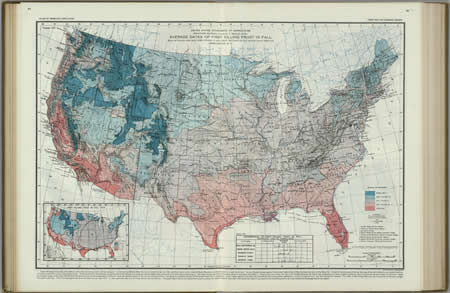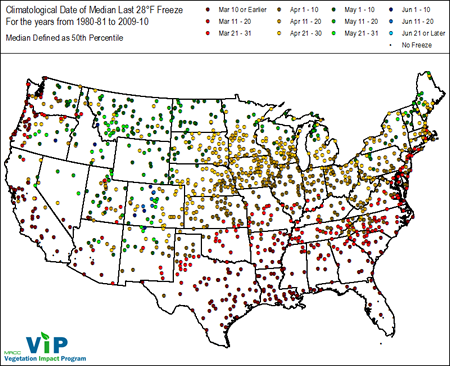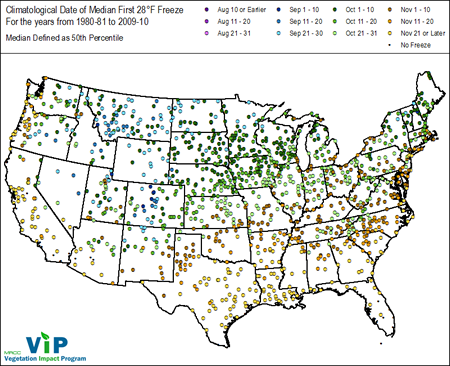Average Dates of First & Last Killing Frost in 1916
Historic maps from 1916 show the average first and average last "killing" frost for the United States. These maps are from the 1916 National Atlas of American Agriculture by William Gardner Reed and published ty the U.S. Department of Agriculture. A "killing frost" is now considered to be a temperature of 28°F in the United States, but in 1916, the type of frost was determined by the level of damage incurred. Below is an excerpt from the Atlas chapter "Frost and the Growing Season":
Definition of Frost--The occurrence of the last frost in spring and the first in fall are especially noted by the observers of the Weather Bureau. Three distinctive frost types, based on degrees of severity, are recognized, namely, "light," "heavy," and "killing." A frost that has no destructive effect, although tender plants and vines in exposed places may be injured, is recorded as "light." The designation "heavy frost" is descriptive of a condition that in itself is more severe than a light frost - that is, the deposit of frost is heavier and the temperature falls to a lower point, although the staple products of a locality are not seriously injured. The term "killing frost"is used to define a frost, or temperature condition, of sufficient severity to get generally destructive to the staple products of the locality. The distinction between the terms "heavy frost" and "killing frost" is one that has reference more to the effect of the frost than to the amount of deposit. Two frosts may appear equally severe so far as the deposit is concerned, yet little damage may be done by one, while the other may be generally destructive to vegetation. In such cases the former is recorded "heavy frost" and the latter "killing frost."
From the David Rumsey Map Collection, more information on frost and the growing season, and other portions of the Atlas, can be found on their website.
In comparison, the VIP Median Last Spring and Median First Fall Freeze (28°F) for the winters of 1980/81 to 2009/10 show that Midwest last spring freezes are about 2 weeks earlier than those shown on the 1916 maps, and Midwest first fall freezes are about 2-3 weeks later. (Please note: While the maps are similar, there are differences such as the time period length, weather stations used, and frost temperatures.)



